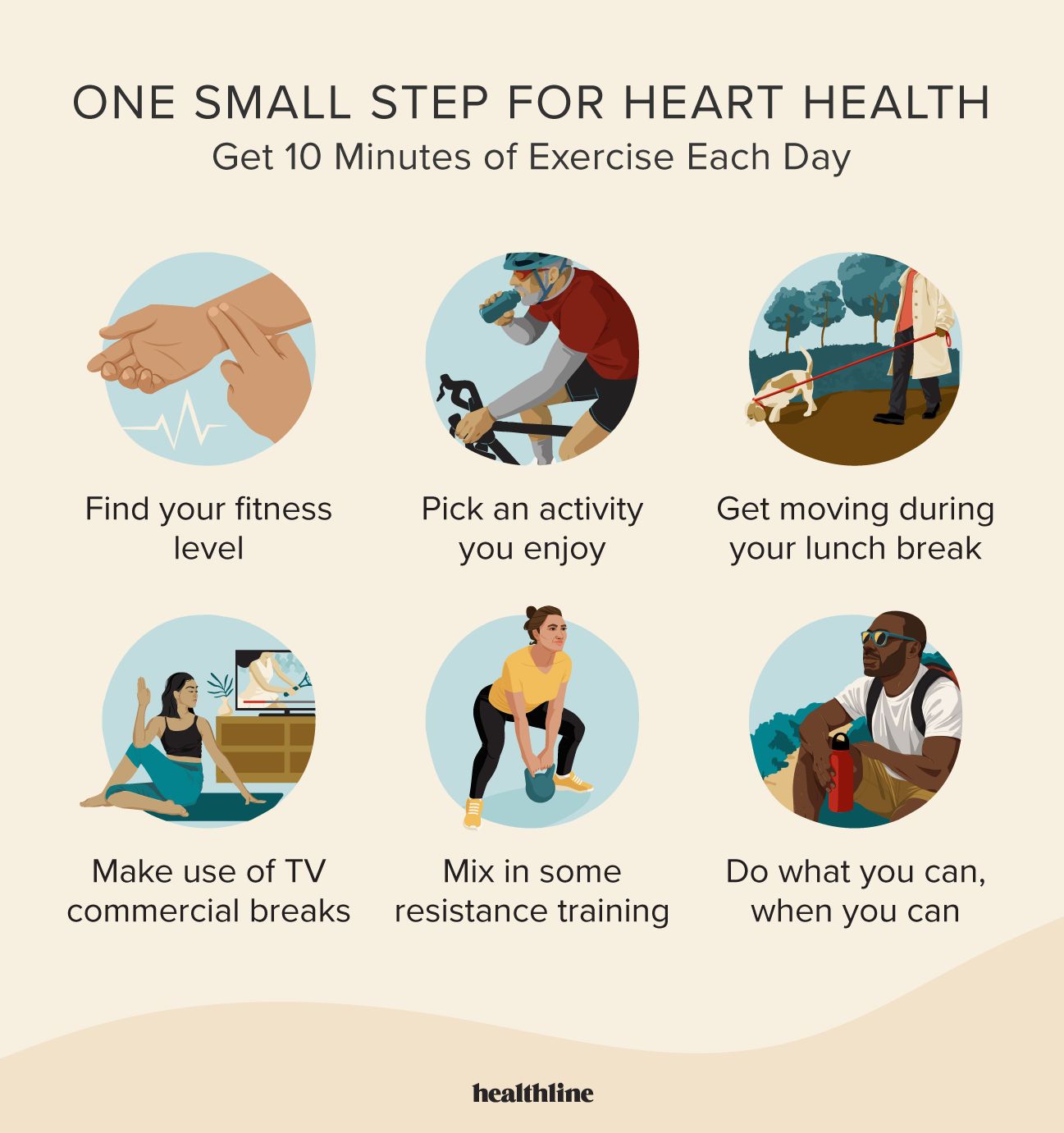Increasing your activity level by 10 minutes each day can make a positive difference in your heart health, both short and long term.
The human body is designed for motion. Being physically active helps keep it functioning at its best. Physical activity is beneficial for everyone, no matter your age, fitness level, or health status — and there’s a form of exercise out there for everyone.
Exercise has both
- boost cognitive function
- reach and maintain a healthy weight
- strengthen bones and muscles
- prevent and manage chronic disease
When it comes to your heart health specifically, exercise
- strengthening the heart muscle
- improving blood circulation and vessel function
- lowering blood pressure
- increasing HDL (good) cholesterol and lowering LDL (bad) cholesterol
- reducing inflammation
- promoting blood sugar regulation
- improving cardiac efficiency and cellular oxygenation
- supporting the parasympathetic nervous system and promoting relaxation
You don’t need to make a major fitness commitment to see the cardiovascular benefits of exercise. Just 10 minutes of vigorous activity a day can make a positive difference.
Why 10 minutes?
Ten minutes of exercise a day is a manageable goal for most people.
The
What’s vigorous exercise? It’s an activity that elevates your heart rate and breathing, usually makes you sweat, and requires enough effort that you won’t be able to talk during it without feeling breathless.
It’s OK if you’re not able to hit the 10-minute mark on the first day, or if all 10 minutes aren’t “vigorous.” According to a study from 2022, even 20 minutes of vigorous activity a week (just over 2 minutes each day) may be enough to lower the risk of heart disease by 40%.

Everyone’s physical fitness level and ability are different. When you’re just beginning, even a brisk walk might be enough to raise your heart rate and breathing significantly.
Learning your target heart rate can help you gauge exercise intensity. Generally speaking, your age-predicted maximum heart rate is around 220 minus your age in years. During vigorous activity, your target heart rate should be
For example, if you’re 35 years old, your age-predicted maximum heart rate is 185 beats per minute, and your target heart rate for vigorous activity is between 129 and 157 beats per minute.
You don’t have to add 10 minutes of sprints to your day if you hate running. Select an exercise you’re interested in and enjoy helps you combine fitness with pleasure. Effort is what determines an activity’s intensity.
For example, if you really enjoy biking, you can up your intensity by shifting to a more challenging gear or choosing more demanding trails, such as those with steep inclines.
If you’re struggling to find time outside of the workday to get in those 10 minutes of exercise, consider using 10 minutes of your lunch break instead.
Small bouts of exercise can help your blood sugar levels, too: A 2022 systematic review and meta-analysis suggests that even 2 minutes of walking after a meal helps control your blood sugar levels and supports cardiometabolic health.
There’s no need to be bored during commercial breaks while you watch your favorite show. Many body weight exercises can be done right in your living room while you wait, including:
- air squats
- burpees
- jumping jacks
- high knees
- mountain climbers
While around 10 minutes of vigorous exercise daily is part of the AHA activity recommendations, vigorous aerobic exercise isn’t the only type of physical activity that benefits your heart health.
Resistance training is also beneficial for your heart health. It involves exercises that require muscle contraction against an external force.
According to a
You can do many body weight resistance exercises just about anywhere, including:
- lunges
- planks
- pushups
- squats
- tricep dips
Ten minutes of exercise a day is a goal, and it’s OK to take small steps toward achieving it.
If vigorous exercise is too much at the start, begin with less intensity or be active for a shorter duration. A 10-minute daily increase in any activity
According to a
Exercise is good for your heart, but working out every day isn’t always easy. To help improve your cardiovascular fitness, setting a goal to get 10 minutes of exercise each day can get you started in the right direction.
It’s OK to start slow. When you’re just beginning an exercise routine, you don’t have to work for 10 minutes straight or maintain a consistently vigorous pace. Increasing your exercise each day in any way can benefit your health.




